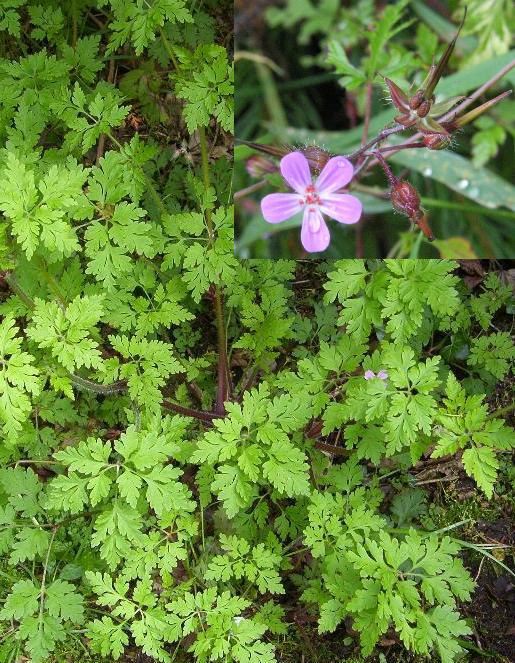Herb RobertScientific Name: Geranium robertianum |
Usually a biennial which prefers shady spots and spreads by seed. It is a native of Europe, Asia and North Africa, but is considered an invasive weed in parts of North America where it may have been introduced as a garden plant or for its medicinal properties. The stems can be tinged with red and sprawl around reaching up to 50cm high. The deeply-lobed fern-like leaves turn a firey red in the autumn.
The five-petaled, pink flowers appear from May to October.
An infusion of the whole top-growth has been used as a diuretic to treat kidney trouble and a as tonic; also as a remedy for dysentery. It has antiseptic and styptic effects so can be used to treat wounds, toothache and nosebleeds. Due to the odour of the leaves when crushed, they can be rubbed on the body to repel mosquitoes and midges.
It is not usually a problem weed and can be a useful plant in a woodland garden, but it easily uprooted, the fibrous roots do not regrow. It should be removed before flowering occurs to prevent spread by seeding.
Weedkillers to use:-
Dichlobenil prevents emergence of seedlings among established
woody plants, for up to one year.
Glyphosate is a systemic which kills the root.
Nicholas Culpepper
(17th century astrologer-physician)
"All Geraniums are vulneraries, but this herb more particularly so."
Vulnerary - wound healer.
Follow these links for further details on Weeds, Weed Removal and Weed Prevention.
